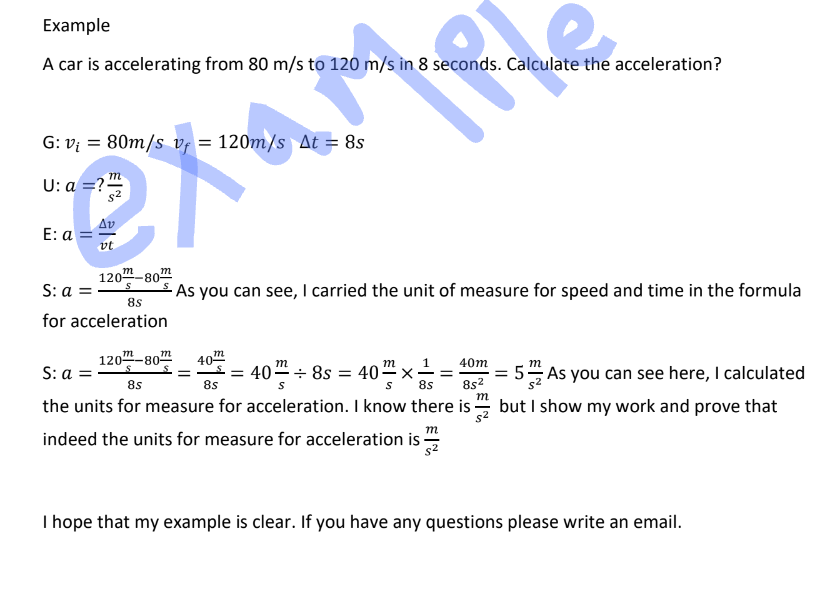What would happen to the average net force if the car in the test hit a bridge support directly, instead of the barrels? Explain your reasoning. You may assume that the
use guess method if you cant use guess method like the example below dont do the question at all please and thank u
please do it in guss method no other way
Solving problems in Physics, we must always use GUESS method.
Guess stands for:
Guess: G Here you write down what is given in the question
Unknown: U Here you list what you have to calculate, to solve for.
Equations: E here you list all the formulas you need to use to solve the problem
Substitution: S This first letter S in the word, you will just substitute what is given in the
formula. You do not calculate anything. The calculations will occur at the second S: Solve. What
is very important here is to carry with you the units of measure in the formula. Not only the
numbers. This is very important, once again.
Solve: S The last step, second S, you will solve what you plugged in the first S for Substitution.
Very important here is to manipulate the units of measure such that the final units of measure
to be proved by your work. This part is very important, since you will allow you to verify that
what you do is correct. For example, you calculate for acceleration, we know that the units of
measure are
m
s
2
But what I want is to show me how you determined m
s
2
using the formula, and
manipulating what you wrote in the fraction in order to obtain/calculate/determine the units of
acceleration m
s
2
I will show you an example to clarify this
The last to letter S, can repeat again i8f you have to calculate for more stuff, or you determine
one value that can be used in another formula. Like solving step by step.
![22. To help reduce the severity of accidents, an engineering company designs large plastic
barrels filled with antifreeze that can be placed in front of bridge supports. In a simple
test, a 1200 kg car moving at 20 m/s [W] crashes into several barrels. The car slows down
to 8.0 m/s [W] in 0.40 s.
a) Find the average net force acting on the car during the collision.
b) What would happen to the average net force if the car in the test hit a bridge support
directly, instead of the barrels? Explain your reasoning. You may assume that the
bridge supports are not severely damaged during the collision.
c) Why is it important to use antifreeze in the barrels, instead of just water, if the barrels
will be used in Canada? Explain by discussing the effect this would have on the net
force.
23. A stationary 2000 kg cannon fires a 25 kg cannon ball horizontally at 250 m/s. Find
the velocity of the cannon after firing the cannon ball. You may assume that there is no
friction acting on the cannon.](/v2/_next/image?url=https%3A%2F%2Fcontent.bartleby.com%2Fqna-images%2Fquestion%2Fdc8dfbd3-eff9-44bf-a936-fc352fedaeee%2F4bebd3ca-aea3-4e36-a36c-2b1ed1a793c3%2F3e00dzf_processed.png&w=3840&q=75)

Step by step
Solved in 3 steps with 3 images









